Science
Frogs and Toads Together: Why do Amphibians Group Up?April 11, 2025

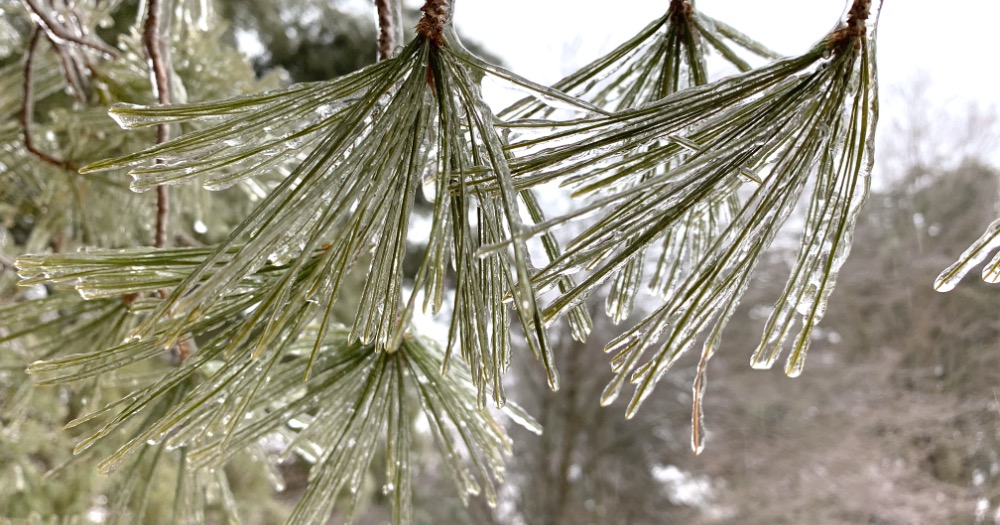
Sometimes teaching about matter can be intimidating and challenging. It’s an abstract concept that educators have the difficult task of teaching to young children. This guide to teaching matter in winter will hopefully give you some ideas for leveraging the season to help you fulfill your curricular goals in an impactful and engaging way while also developing a love of science and critical thinking skills in your students.
Don’t need all the information? Click on these links to jump to what you need:
What are the four states of matter?
Teaching about matter in winter
Activities for teaching states of matter
To be on your A-game for teaching about matter, let’s get some background information about states of matter covered. A scientific definition for matter is anything that has mass and volume. A more child-friendly definition of matter is anything that takes up space and has weight.
With that being said, the states of matter are the different forms that matter can be found in. These forms are possible based on the arrangement of the particles and the amount of energy the particles have.
Have you ever wondered how many states of matter there are? According to scientists there are only four naturally occurring states of matter that have been discovered so far (Bagley, 2023). So, what are the four states of matter? The four naturally occurring states of matter are solid, liquid, gas, and plasma.
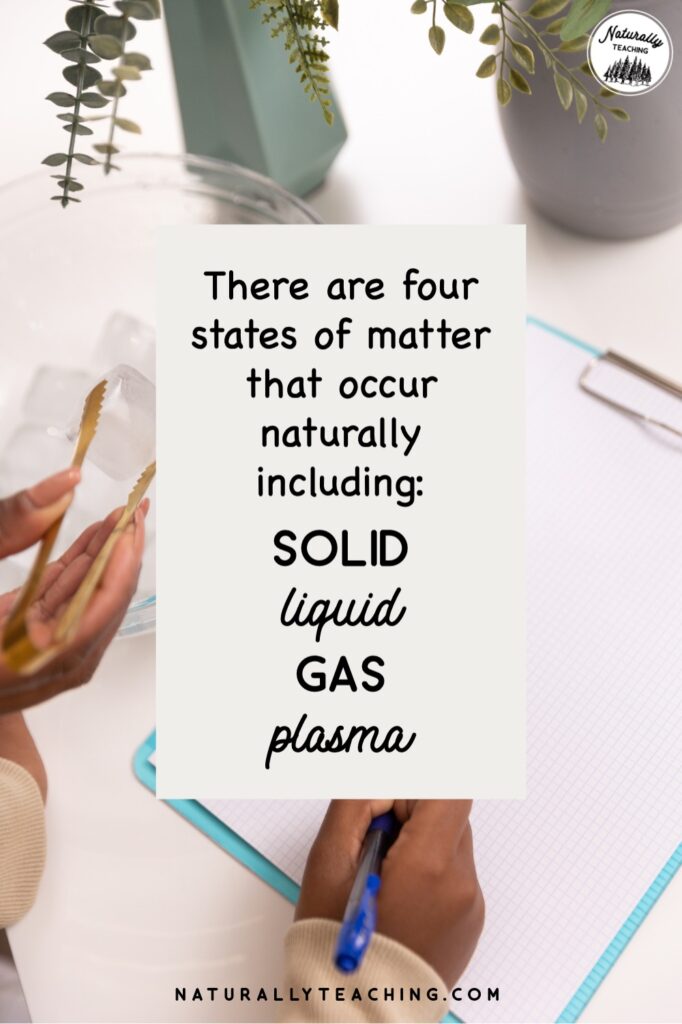
Solids:
Liquids:
Gasses:
Plasma:
Although there are four naturally occurring states of matter on Earth, elementary schools tend to focus on three states of matter: solid, liquid, and gas. In the lower elementary grades, many schools focus on solid and liquid since they are concrete and then introduce the abstract concept of gas in the upper elementary grades.
You may have heard of the “five states of matter” or the “seven states of matter”, but any state of matter outside of the four naturally occurring states can only be observed in a lab. A couple of examples of man-made states of matter are time crystals and fermionic condensates (Bagley, 2023).
Teaching about matter during winter can turn this abstract concept into a hands-on experience for your early childhood learners. How’s that? Winter provides the temperatures necessary to find water in multiple states.
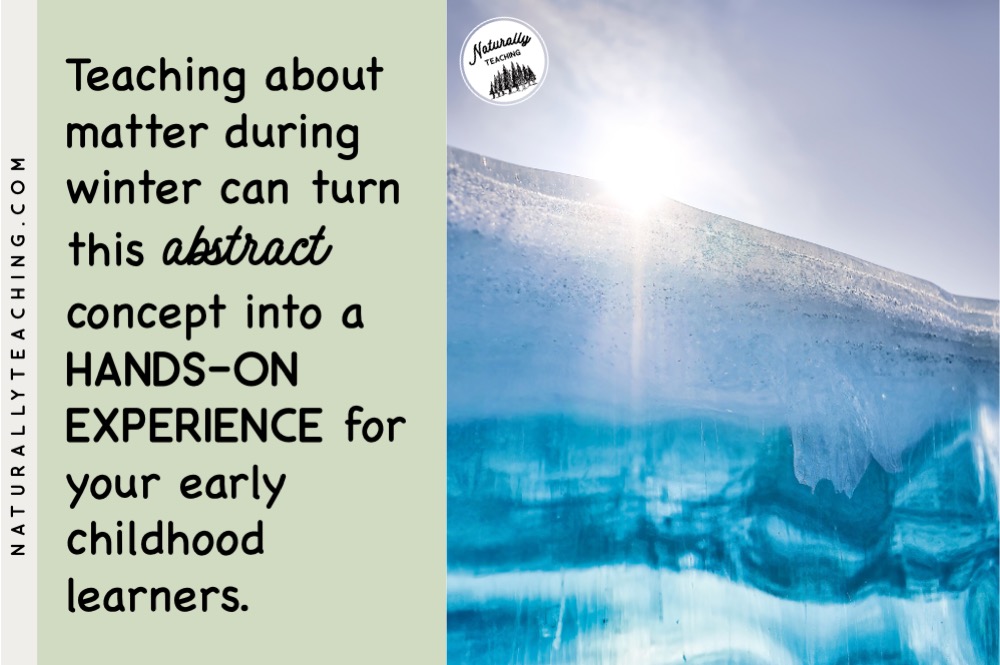
By focusing on water as your examples for solid, liquid, and gas, your students will have access to all three states during the winter season. Depending on the day, you may be able to find examples of each state naturally occurring outside. More often though you will need to bring liquid water outside so that they can see the properties of liquid versus gas and solid.
During the rest of the year you could bring ice outside to act as your example of a solid, but it often melts while the students are learning. While that’s a good lesson in itself, it’s valuable for your students to have extended periods of time with the different states to observe and experiment with their characteristics.
So, let’s bring up the elephant in the room: is snow a solid or a liquid or something in between? While snow appears to have some of the characteristics of a liquid, most notably taking the shape of a container, the reality is that snow is a solid in a very small shape. This small shape makes snow appear to conform to a container’s shape but it doesn’t really. Learning about snow and its properties could be a great phenomenon to work towards solving if you follow the Next Generation Science Standards.
One of my favorite activities for teaching states of matter in winter is free exploration. Gather some clean recyclables of different shapes and volumes and let your students explore the properties of solids, liquids, and gasses in the winter weather.
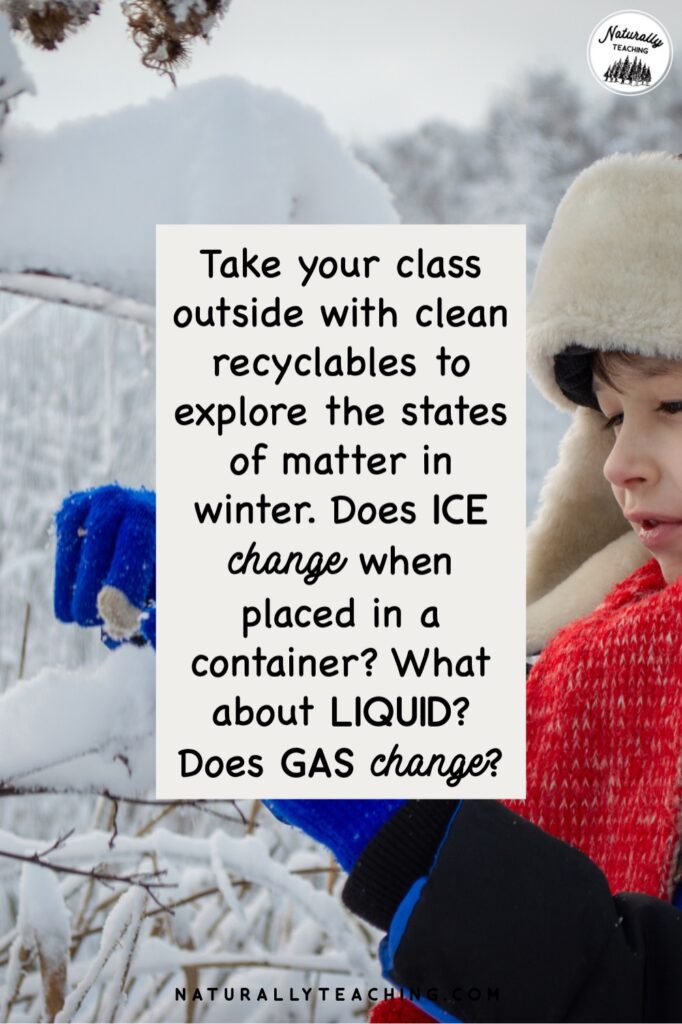
Solids don’t change their shape when placed in a container and typically take force to break apart. Encourage your students to take ice that they find on playground equipment or in puddles and try to put it into a yogurt dish and see what happens. Does it change to the shape of the container? Try it in a different container; does that make a difference?
Bring out a bucket of water and encourage your students to dip the same container in the bucket; does the liquid water change to the shape of the container? Try it in a different container; does that make a difference? *Note: you may want to have this experience in a sensory table in the classroom in order to keep your students’ hands from getting too cold.
Explore gas by talking about the air around them. Is there air in the containers? Does it fill up the container and take its shape? Can they find a way to get the air out of the containers? This is where snow can come into play. If they fill their container up with snow they’ve displaced the gas and pushed it out into the atmosphere.
One of the more engaging review activities for teaching states of matter is to go for a states of matter hike. Bring your students together for a guided hike around your school green space to make observations and apply their states of matter knowledge (want to know how to run a guided hike? Check out the learning outdoor activities section of the article “Outdoor Education: How to Use Nature to Improve Your Science Studies”).
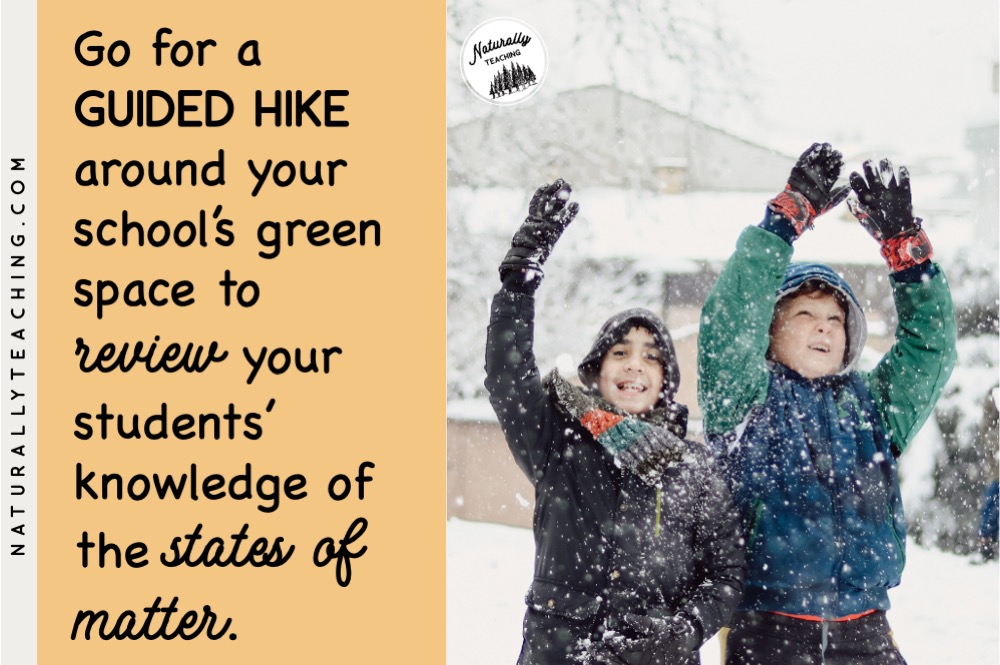
After reminding your students of your outdoor expectations, work together as a group to point out examples of solids, liquids, and gasses near your school. You could make a class list or take pictures to keep track of what you find. This activity could be used anytime of year if you classify all material types (e.g. playground equipment, plants, animals, clouds, etc.) as solid, liquid, or gas.
Experiments can be helpful activities for teaching states of matter and this one is easy but impactful. Grab a recycled bottle such as a water bottle and fill it to the top with snow. Ask your students if snow is a solid, liquid, or gas. What evidence do they have for their hypotheses?
Let the container sit overnight in your classroom so that the snow melts. Present the bottle to the class the following day and ask them what happened to the snow? Is it a solid or a liquid now? Someone will probably know that the snow melted. Ask your students if they changed their mind about whether snow is a solid or a liquid? What evidence do they have to support this change?
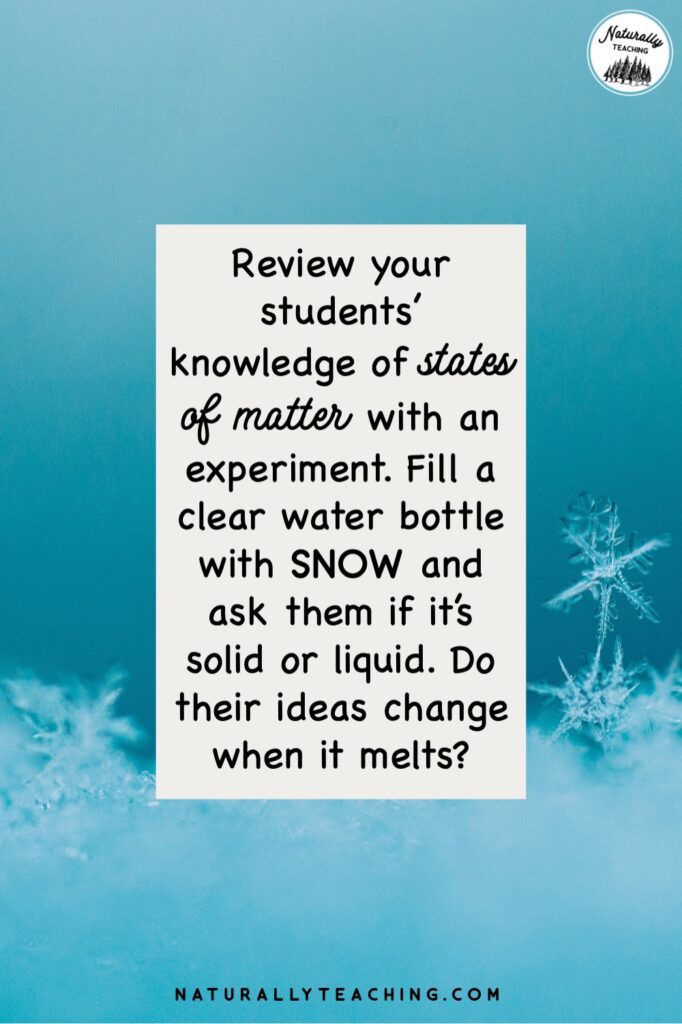
As a bonus, the beautiful white snow that they saw the night before will have floaty things in it when it melts to liquid water. Point those things out to your students so that they can see that snow has stuff inside like dirt and dust that they are eating every time they take a handful of snow to their mouths. Hopefully this will deter at least a few of your students from being snow eaters, a problem many elementary teachers know well!
Hopefully this article got you jazzed up about teaching matter in winter. In a world of experiences, why not take advantage of what you have available to you to give your students memories to connect to their learning? Experiential learning is one of the most powerful ways to teach science so get out there and experience the states of matter in winter with your kiddos!
Are you looking for snow related activities for kindergarteners this year? Embrace the season and combine states of matter with weather this winter. Check out my Snow and Winter Weather Mini Unit for Kindergarten with ELA and weather science activities that can be used alongside most snow-related picture books.
Bibliography
Bagley, M. (2023, October 6). States of Matter: Definition and Phases of Change. Retrieved from https://www.livescience.com/46506-states-of-matter.html
Center for Science Education. (n.d.) Plasma. Retrieved from https://scied.ucar.edu/learning-zone/sun-space-weather/plasma
Do you have any amazing experiences with teaching about matter in your classroom? Describe them in the comments section to inspire a fellow elementary teacher to take action!
Looking for snow picture books to help teach science in your classroom? Check out my article “12 Snow Books to Support Your Elementary Curriculum” for great suggestions.
One thought on “Snowy Science: A Guide to Teaching About Matter in Winter”